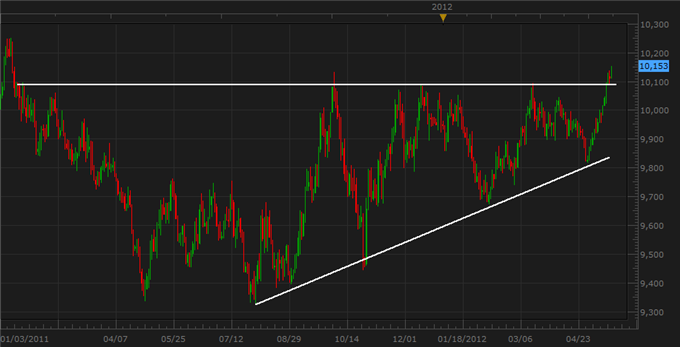Should Your Equities Strategy Focus on Relative Strength or Weakness MetaTrader Expert Advisor
Post on: 16 Март, 2015 No Comment

One of the long-running debate for designers of equities-based quantitative strategies can be boiled down to three words: strength vs. weakness.
The strength side of the argument maintains that stocks that are breaking into new highs are statistically more likely to continue higher. On the flip side, the weakness argument advocates buying stocks at their lows because they are priced at a discount to their actual value.
There are investing and trading icons on both side of this argument going all the way back to guys like Jesse Livermore and Benjamin Graham. There have also been plenty of successful examples of both strategies over the past hundred years.
Cesar Alvarez put together a simple rotational system that allows us to compare relative strength to weakness.
In one of his recent posts, Cesar Alvarez decided to look into designing a simple rotational strategy that would use the S&P 500 stocks as its universe and rebalance its positions on a monthly basis. The interesting debate that he faced was whether to focus on holding the best performing stocks or the worst performing stocks.
Of course, the best way to determine the answer to that debate was to actually test both strategies. Here are the rules and parameters as he defined them:
Test Parameters
- From 1/1/2001 to 10/31/2013
- $.01/share for commission
- 3 month T-bill interest rate used for cash

Best Performing Stocks
- It is the first trading day of the month
- Stock is a member of the S&P500
- Rank stocks from the highest to lowest by (6,12) month return
- Buy the top 20 ranked stocks at the close
- Optional market timing rule: SPX close > 200 day moving average of SPX closes on the entry day
- Hold until next month
Worst Performing Stocks
- It is the first trading day of the month
- Stock is a member of the S&P500
- Rank stocks from the lowest to highest by (6,12) month return
- Buy the top 20 ranked stocks at the close
- Optional market timing rule: SPX close > 200 day moving average of SPX closes on the entry day
- Hold until next month
The Backtesting Results
Alvarez lists the stats for each version of this simple system, but we can boil those down with a few quick observations. First, the systems that utilize the optional market timing rule always outperformed the systems that did not utilize the rule. Second, in each instance, using a 6-month return produced better returns than using a 12-month return.
After processing those observations, it is clear that we just need to look at two systems. The system that held the best performing stocks each month produced a CAR of 13.05% with a maximum drawdown of 27.88%. The system that held the worst performing stocks each month produced a CAR of 10.48% with a maximum drawdown of 42.22%.
While the numbers indicate that holding the best stocks would have produced a better and less volatile return than holding the worst stocks, both strategies dramatically outperformed a simple buy and hold approach.
Looking at the equity chart that Alvarez provides, you can see that the Worst Stocks Strategy performs just as well (if not better) than the Best Stocks Strategy for most of the twelve year period. The key differences are that the Worst Stocks Strategy got crushed around 2008, and the Best Stocks Strategy have performed phenomenally well this past year.
Alvarez suggests that he would also repeat the test changing the number of stocks held and trying different lookback periods to rank the stocks. I would be curious to see how adding a stop-loss that allowed the strategy to exit positions mid-month would affect the drawdowns.














